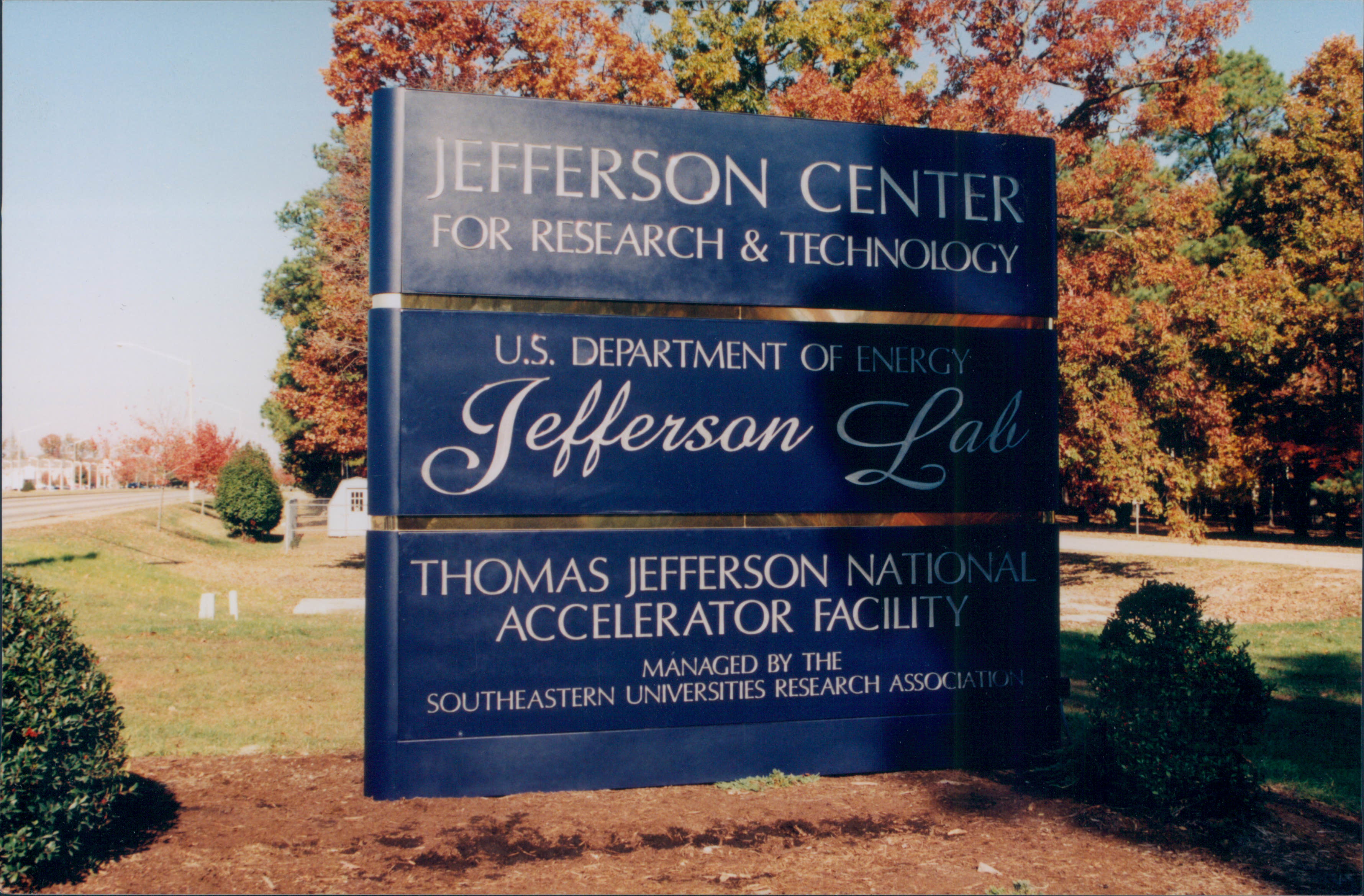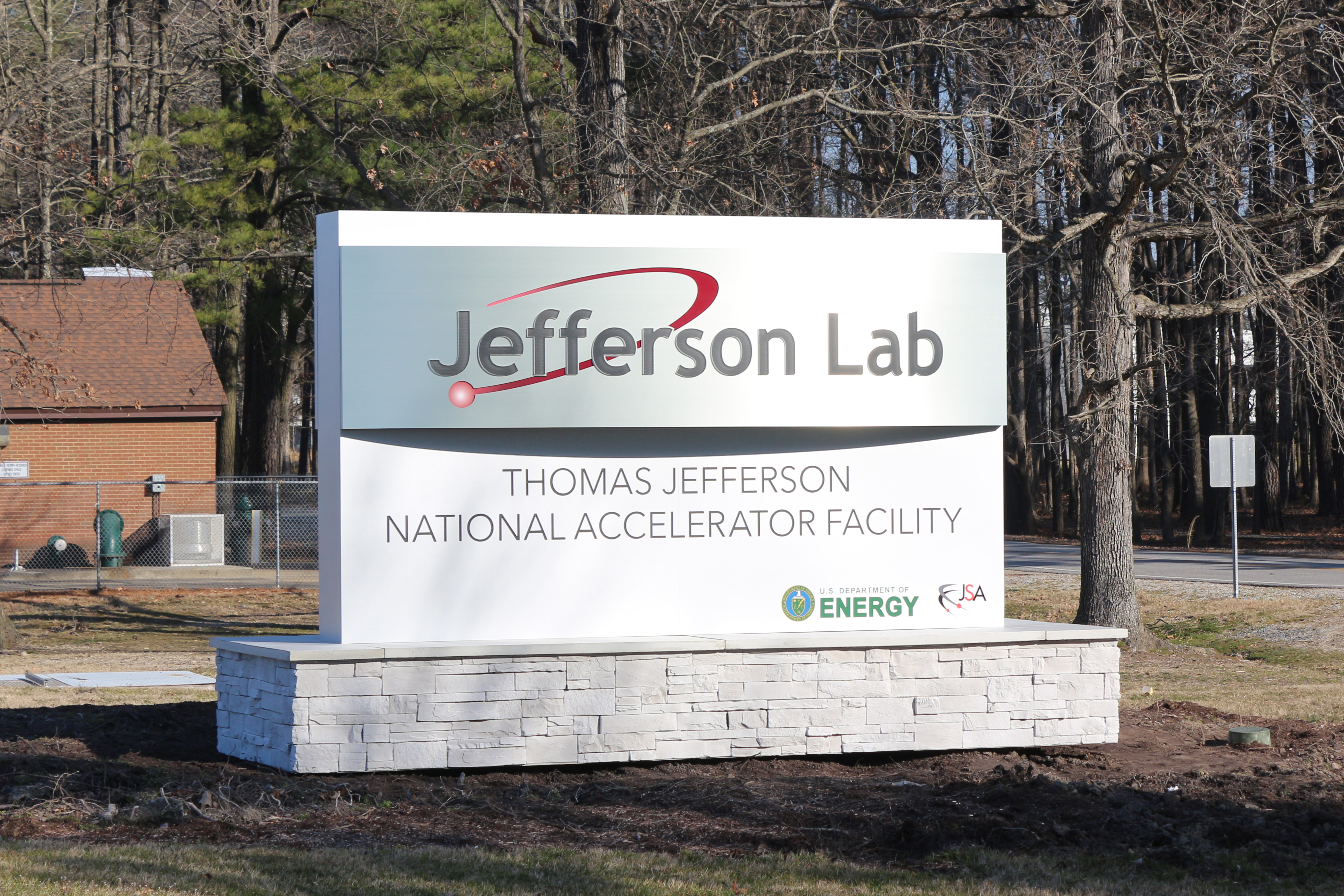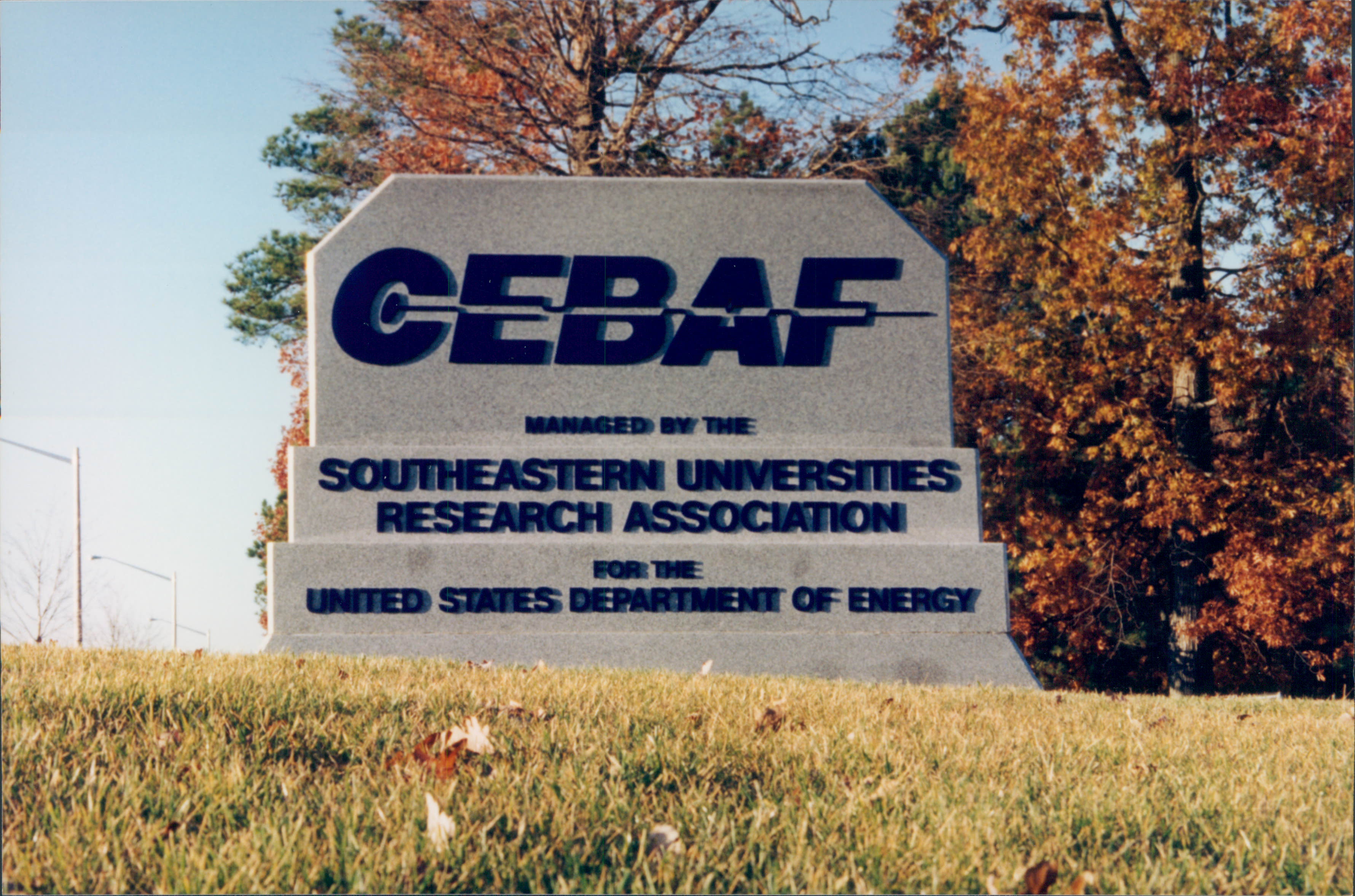Jefferson Lab main entrance signage through the years
Jefferson Lab updates its main entrance sign with a fresh, new design
Late at night on the last weekend in July 2020, the main entrance sign for the U.S. Department of Energy’s Thomas Jefferson National Accelerator Facility was damaged by a motor vehicle. The driver was all right, but an immediate result was the unfortunate partial demolition of the lab’s nearly 25-year-old primary location marker on busy Jefferson Avenue.
However, this dark cloud came with a silver lining. The plan to refresh the main entrance sign, which was originally installed in 1996, had already been well underway. While the latest sign update came ahead of schedule, Jefferson Lab was prepared to move forward on the path to full replacement.
“The facilities team had already been working in conjunction with the lab’s communications team to go through the design iteration process, which can typically take several years,” said Rusty Sprouse, Jefferson Lab’s Facilities Management & Logistics division manager.
The replacement process was kicked into high gear, even as FM&L staff carefully cordoned off the area and cleared away parts of the old sign for safety. Six months later, despite delays in work due to the pandemic, the design had been finalized and fabrication of the new sign was nearly complete.
The last of the lab’s main sign was removed in mid-February by crews in anticipation of installing the new one.
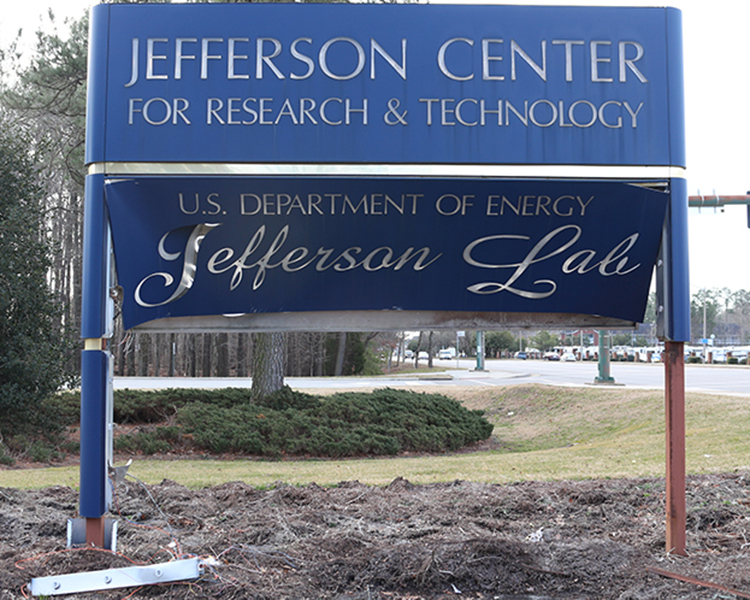

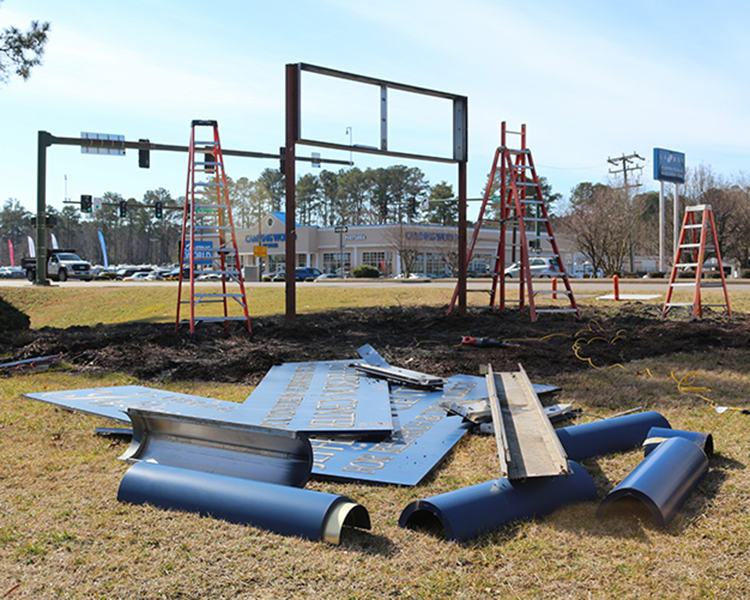
Primary installation of the new sign began March 2, 2021, and will wrap up with the addition of internal lighting to assist with visibility at night later this month.
“We were able to use the existing steel support beams from the previous signs in the buildout of the new sign,” shared George Gardner, the installation foreman at Sign Media. “The rest of the sign was manufactured locally from scratch to accomplish the desired design.”
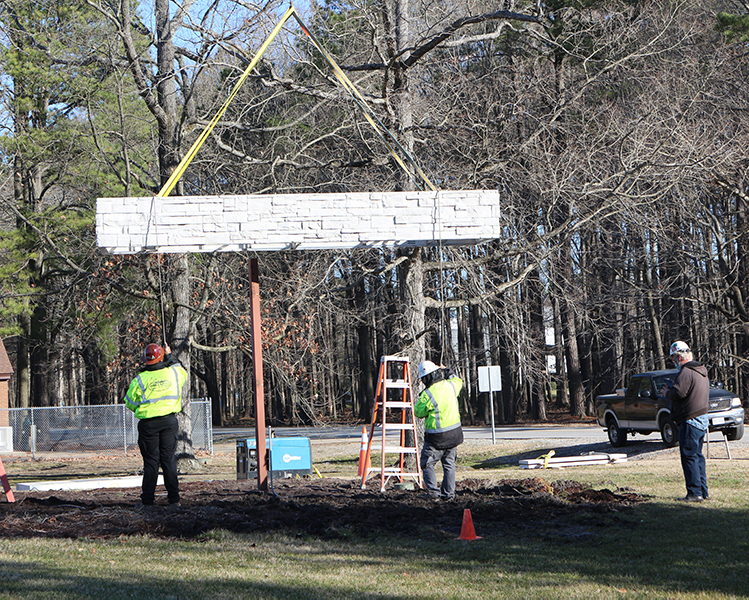

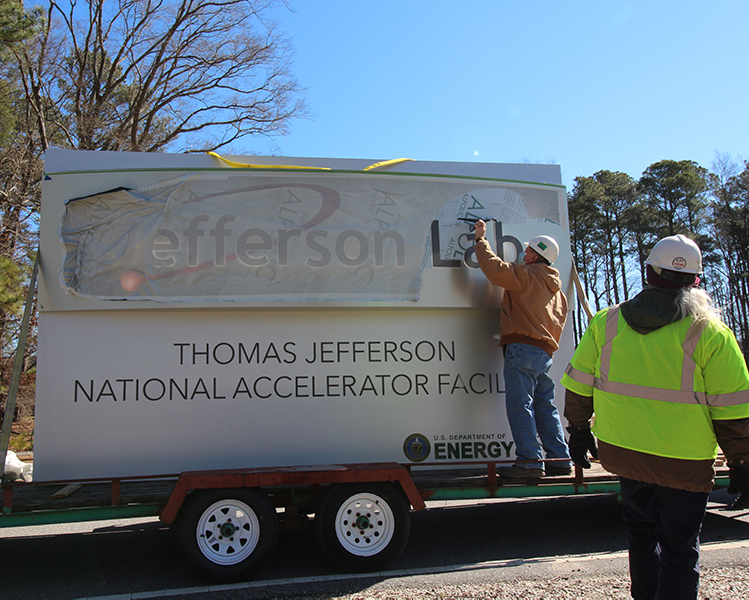
New Design Highlights Modern Lab

The newly designed main facility sign is the third such installed in this location on Jefferson Avenue. The original sign featured the lab’s Continuous Electron Beam Accelerator Facility designation and logo, and it remained in place until 1996, when the lab’s name was changed to Thomas Jefferson National Accelerator Facility.
The updated design both harkens to the past by bringing back stone elements and the lab logo and looks to the future with consideration of the changes taking place around the facility property. However, it was also vitally important for the sign to convey that the lab has its own unique identity.
“Our main priority was for the design of the sign to be cohesive with the branding of the lab and all of the existing signage throughout the campus,” Sprouse said.
Jefferson Lab has a variety of signage throughout the campus, from building signs to wayfinding signage, and a plan is in place to ensure that as the lab campus continues to evolve to meet the needs of the lab’s mission, all campus signs remain unique to the facility while also matching the look and feel of the surrounding area.
Sprouse says that FM&L division staff continue to plan for signage updates. As a component of campus updates, staff members have engaged an architecture and design firm to provide input on different options available to the lab as the need arises.
By Jessica Bedenbaugh
Contact: Kandice Carter, Jefferson Lab Communications Office, kcarter@jlab.org


